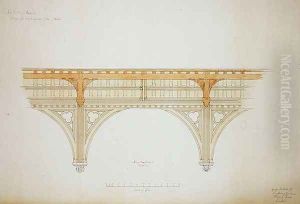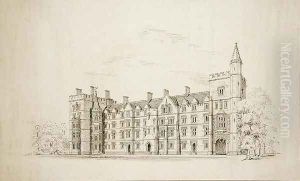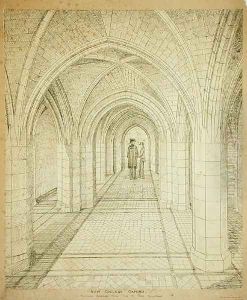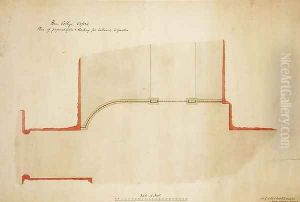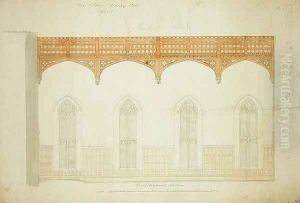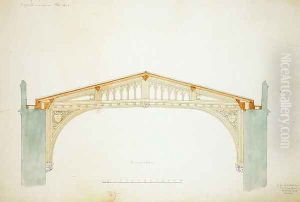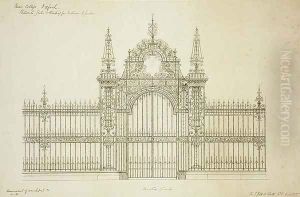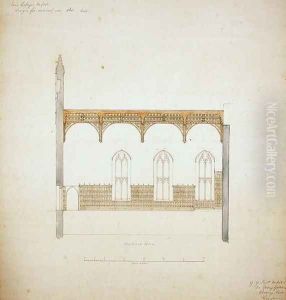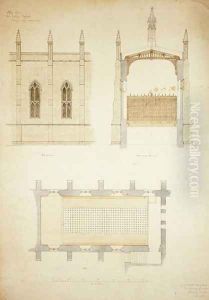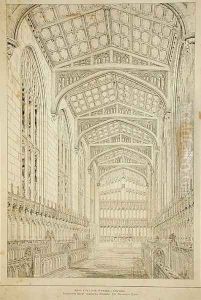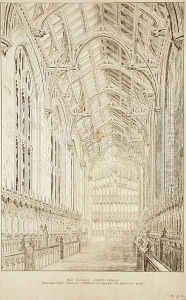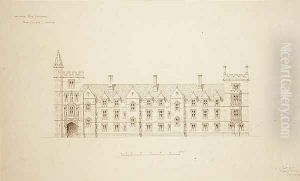Sir George Gilbert Scott Paintings
Sir George Gilbert Scott was a prominent English Gothic Revival architect, born on July 13, 1811, in Gawcott, Buckinghamshire, England. He became one of the most successful and prolific architects of his time, deeply influencing the architectural landscape of Victorian England through his restoration of medieval buildings and the design of new churches, cathedrals, and secular buildings.
Scott’s early interest in architecture was nurtured by an apprenticeship under James Edmeston, a London architect. He later joined the office of Henry Roberts and subsequently the practice of William Bonython Moffatt, with whom he entered into partnership. It was during these formative years that Scott developed his passion for Gothic architecture, which would become the hallmark of his career.
His work on the restoration of historic buildings was vast, including famous projects like Westminster Abbey, the cathedrals of Ely, Chichester, and Hereford, among others. Scott was also involved in the restoration of the Collegiate Church of St Peter at Westminster (better known as Westminster Abbey) and was a proponent of the careful conservation and restoration of ancient buildings, though his approach sometimes sparked debate among later conservationists.
In addition to restoration, Scott designed numerous new buildings. Perhaps his most famous work is the Midland Grand Hotel at St Pancras Station in London, celebrated for its extravagant Gothic Revival style and intricate detailing. Other notable projects include the Albert Memorial in London, the University of Glasgow's main building, and St Mary’s Cathedral in Edinburgh.
Scott was not only an architect but also an influential figure in the architectural community, advocating for the professionalization of architecture and the importance of architectural education. He was a founding fellow of the Royal Institute of British Architects (RIBA) and served as its president from 1873 to 1876. His contributions to architecture were recognized by Queen Victoria, who knighted him in 1872.
Sir George Gilbert Scott passed away on March 27, 1878, leaving behind a legacy that significantly shaped the Gothic Revival movement in Britain. His work continues to be celebrated for its architectural beauty and historical importance. Scott's influence extended beyond his lifetime, inspiring future generations of architects and contributing to the ongoing appreciation of Gothic Revival architecture.
